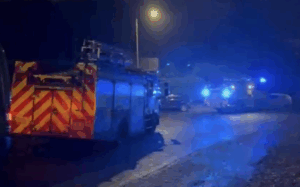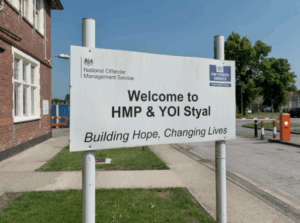An Israeli air strike on Saturday targeted the densely populated Al-Mawasi area near Khan Younis in southern Gaza, a zone previously designated as a humanitarian safe zone. The attack resulted in the deaths of at least 90 people and nearly 300 injuries, according to health authorities in the Hamas-run Palestinian enclave. The Israeli army stated that the strike aimed to kill Mohammed Deif, the head of Hamas’s military wing.
The airstrike, one of the deadliest in the ongoing conflict, struck the Al-Mawasi area, which had been designated as safe for hundreds of thousands of Palestinians. Israeli Prime Minister Benjamin Netanyahu stated, “there still isn’t absolute certainty” that Deif and another Hamas commander, Rafa Salama, were killed in the strike.
Deif and Yahya Sinwar, Hamas’ top official in Gaza, are believed by Israel to be the chief architects of the October 7 attack that killed approximately 1,200 people in southern Israel and triggered the current conflict. Deif, who has evaded multiple Israeli assassination attempts and has been in hiding for more than two decades, was believed to be in the area targeted by the airstrike. On October 7, Hamas issued a rare voice recording of Deif announcing the “Al Aqsa Flood” operation.
Impact of the Strike
The strike occurred at a sensitive time in cease-fire negotiations. If confirmed, Deif’s death would be a significant victory for Israel and a major psychological blow to Hamas. Netanyahu reiterated that Israel will not end the war until Hamas’ military capabilities are destroyed, with Deif’s elimination being a crucial step.
However, Hamas denied that Deif was in the area, calling the claims a cover-up for what they described as a “horrific massacre.” The Gaza Health Ministry reported that many victims were still trapped under rubble, and first responders struggled to reach them.
International Reactions
Neighbouring Egypt, involved in mediating cease-fire talks, condemned the strike, stating that it complicates efforts to reach a truce. Egypt’s Foreign Ministry criticized the “shameful silence and lack of action from the international community.”
Egyptian, Qatari, and U.S. mediators continue to push for a three-phase cease-fire and hostage release plan. This proposal involves an initial cease-fire, limited hostage release, and Israeli troop withdrawal from Gaza’s populated areas, followed by negotiations for a permanent cease-fire and complete Israeli withdrawal.
Casualties and Aftermath
Since the conflict began following Hamas’ October 7 attack, more than 38,400 people in Gaza have been killed and over 88,000 wounded, according to Gaza’s Health Ministry. These figures do not differentiate between combatants and civilians.
The recent airstrike adds to the growing toll of the conflict, highlighting the dire humanitarian situation in Gaza and the challenges facing international efforts to broker peace.






































